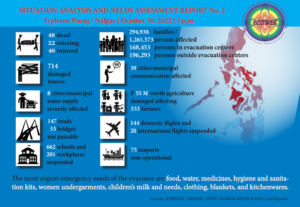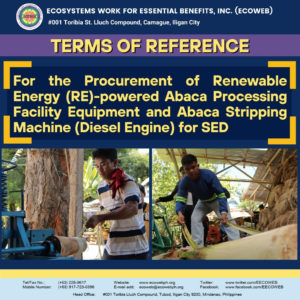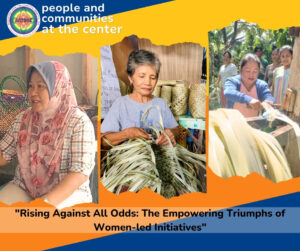
As stated by the National Disaster Risk Reduction and Manageent Council or NDRRMC, the Province of Eastern Samar is identified as one of the most vulnerable areas in the Philippines. It is facing the Pacific Ocean, thus, explaining its high exposure to storms/typhoons which affect the country by an average of 22 typhoons in a year.
Last December 2014, a year after Typhoon “Yolanda” devastated the southern part municipalities of Eastern Samar, Typhoon “Ruby” hit the province again and heavily distressed the northern part municipalities, to wit: San Julian, Sulat, Taft, Can-avid, Dolores, Oras, San Policarpo, Arteche and the City of Borongan. But, since there was less casualty this time, not much attention was given unlike in the “Yolanda” Disaster.
To ensure a successful implementation with the limited resources of this project, cooperation has been made with the concerned government agencies and private organizations. The resources of this project were also leveraged to tap the national and regional government agencies support. Coordination among all stakeholders was prioritized before any interventions.
Based on ECOWEB’s assessment, it was found out that more than the food, shelter, water and livelihood assistance needed by the typhoon-stricken communities. A comprehensive capacity building program is a vital necessity to lessen their vulnerabilities against unexpected disasters. This was the motivation of implementing the project entitled, “Improved Community-Based Disaster Risk Reduction & Management”.
The project was designed to enable the municipal LGUs of Dolores, Oras and San Policarpo and 15 identified pilot barangays to effectively implement an ecosystems and community-based Disaster Risk Reduction and Climate Change Adaptation program based on multi-hazard risk analysis to include typhoon, flash floods, landslides, earthquakes, storm surge, tsunami, and among others.
The project activity includes Local Capacity Building for CBDRRM and integration of DRR-CCA in Contingency and Development Planning as well as in Resource Management and Community Livelihoods Development. Its important component was the conduct of a multi-hazard risk assessment and analysis to include tsunami and the development of an early warning system that links science and local knowledge. The tangible component was the construction of a resilient and standard Community Resiliency Center cum Evacuation Center to serve the at-risk population of the target communities in times of emergency.
To sustain and have a wider impact of the project, policy advocacy has endeavored wherein the learning and lessons in the project implementation, policy, and program recommendations have been crafted and submitted to relevant bodies to contribute to the RA 10121 sunset review and policy amendment process. Also, interventions have been made to institutionalize a DRRM-CCA local policy that strengthens community and multi-stakeholders’ participation.



